'He Shouldn't Have Had to Die': COVID-19 Infects Half of Wisconsin Inmates, Five Times the Overall State Rate
Prisoners Lack Space, and Some Say Rules to Curb COVID-19 Are Unevenly Enforced
Wisconsin Watch
February 15, 2021
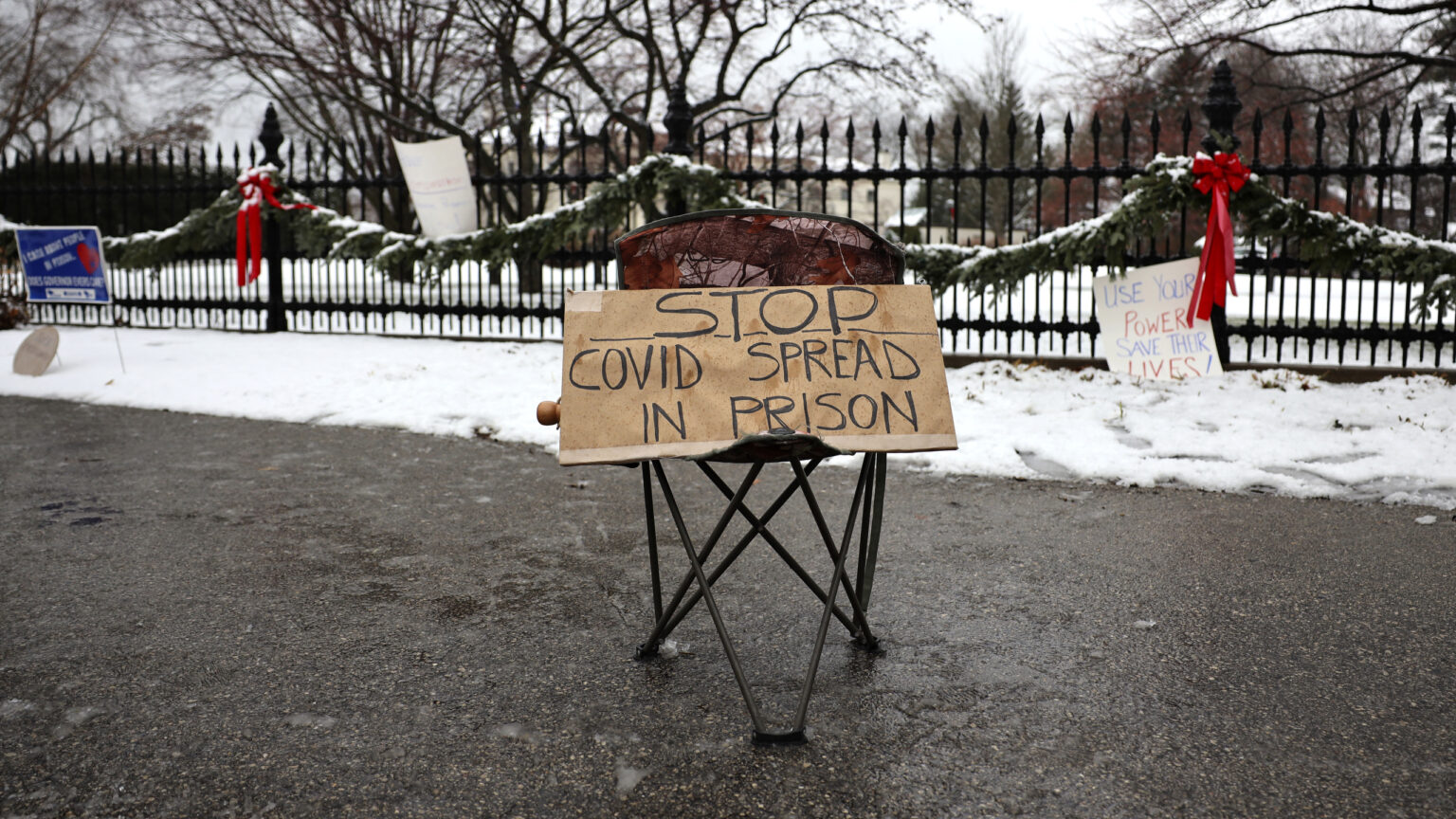
About three dozen people gather outside the Wisconsin governor’s mansion in Maple Bluff, Wis., on Nov. 24, 2020. Event organizers sought to draw attention to the thousands of inmates and staff who have contracted COVID-19 in state prisons and called for Gov. Tony Evers to slow the spread of the disease by reducing overcrowding in prisons. Before the pandemic, Evers set a goal to cut the state’s prison population in half. But 23 state prisons still exceed their designed capacity. (Coburn Dukehart / Wisconsin Watch)
By Vanessa Swales
Wisconsin Watch
Calvin Johnson spent his final weeks at Prairie du Chien Correctional Institution wracked in pandemic anxiety, a former cellmate recalled. He closely tracked COVID-19’s spread in and outside of the medium-security state prison — eyeing daily infection counts in surrounding Crawford County and across Wisconsin.
Johnson, who grew up in Milwaukee and was affectionately called “Chicken,” wore a mask at all times, even when it wasn’t required. Hearing the slightest cough would put him on edge within the cramped cell that he shared with three other inmates, said Randy Forsterling, one of the cellmates. Johnson, 52, lived with high blood pressure, asthma, sleep apnea and the sense that the coronavirus would kill him.
“I was given 13 years for my crime. I was not given a death sentence,” Johnson, who was convicted of armed robbery in 2016, wrote in an Oct. 19 request to modify his sentence for health reasons. “I feel that the precautions the Department of Corrections has put into place to stop the spread of (COVID-19) are no more than a facade and my health, safety, and life are at risk here.”
Milwaukee County Circuit Judge Milton Childs denied the request about a week later, finding “no legal basis” to change Johnson’s sentence due to the pandemic.
“While the court recognizes the potential threat of COVID-19 to the inmate population, it also recognizes that the institution has a legal obligation to take the necessary steps to keep inmates safe and healthy,” Childs wrote.
Johnson’s health declined over the next month, Forsterling told Wisconsin Watch in an email.
“The last thing he said to me was, ‘I can’t take this shit anymore, I can’t breathe,’” Forsterling wrote.
Johnson died at a La Crosse County hospital on Nov. 30. The cause: complications from COVID-19, his autopsy showed.
The Prairie du Chien prison was designed to hold 326 inmates, but about 500 packed its decades-old buildings during Johnson’s final week alive. The facility has reported 413 inmate infections during the pandemic.
More Than Half of Inmates Infected
The coronavirus has run rampant across Wisconsin’s state prison system, infecting at least 2,153 staff members at adult institutions who self-reported test results and 10,786 inmates throughout the pandemic — more than half of the current population. The state has detected infections among inmates at a rate more than five times higher than in the general population. The outbreaks have killed at least 25 inmates, according to DOC data. John Beard, an agency spokesman, declined to say whether any prison staff had died of the virus, citing medical privacy considerations.
Advocates fear even more inmates have died. The agency has not updated its COVID-19 death toll since Jan. 7, and county medical examiners say determining a cause of death can sometimes take weeks or months. Beard said he did not know how many inmate death investigations remained pending, but he did tell Wisconsin Watch that at least 74 state inmates died of any cause in 2020 — up from 51 the previous year and 52 in 2018.
The figures illustrate the dangerous consequences of overcrowded prisons — an issue Gov. Tony Evers, a Democrat, vowed to address before the pandemic struck.
A year after Wisconsin detected its first case of COVID-19 in the general population, however, inmates say crowding — including the continued use of communal bathrooms, day rooms and telephones, along with inconsistent restrictions on gathering and movement — leave them too close to their peers and staff, allowing COVID-19 to freely spread.
Wisconsin Watch interviewed over phone and email more than a dozen inmates at seven facilities for this story. Inmates at five prisons said they witnessed times in which infected inmates were not separated from others. Staff compliance with a DOC masking mandate is uneven, inmates say. And chronic overcrowding remains a major factor driving prison outbreaks in Wisconsin and other states, inmates and experts say.
“The public health experts are unanimous … If you wanted to reduce the number of people in prisons — whether prisoners or staff — who get sick and die of COVID, the most effective thing you could do is cut the numbers (of inmates),” said David Fathi, director of the American Civil Liberties Union’s National Prison Project.
Wisconsin has trimmed its prison population by about 3,400 since early March 2020 — now at its lowest point in more than two decades. Revocations — violations of post-release supervision — are trending down, Beard said, meaning fewer people are serving time for that reason. Still, the state’s 19,858 inmates as of Jan. 29 are filling facilities designed to hold only 17,609.
And inmates report that prisoners over 65 have already begun to receive COVID-19 vaccines — amid an ongoing legislative debate about whether all inmates should be prioritized for vaccination.
Inmate advocates say Evers could more quickly alleviate crowding — and slow the virus’ spread — by issuing reprieves or commuting the sentences of medically vulnerable inmates who pose little public safety risk. He has declined to wield those powers despite previously setting a goal to cut the state prison population in half.
In a Dec. 1 media briefing, Evers dismissed suggestions that overcrowding made inmates significantly more vulnerable to COVID-19. More important, he said, was to halt the virus in the population outside prisons and block its pathways in.
“It’s the issue of what’s going on in the community and in the state of Wisconsin — and in our country — that this virus is so prevalent,” he told reporters. “We have to break that cycle. If we had 5% of the prisoners left in an institution, they’d still be getting COVID-19.”
In an email to Wisconsin Watch, Evers spokeswoman Britt Cudaback touted the recent population dip and DOC efforts to expand the state’s Earned Release Program and reduce prison admissions for technical parole violations.
Evers is opting against more dramatic measures while applauding the Black Lives Matter movement and pushing the GOP-controlled Legislature to address racial disparities in policing and incarceration. Wisconsin as of 2017 incarcerated Black adults at a rate nearly 12 times higher than white adults — the second-highest disparity in the country.
Inmate infection rates have slowed in recent weeks. And vaccines offer additional hope for preventing more sickness and death. But inmates fear additional outbreaks, and families are mourning losses.
“He shouldn’t have had to die like that,” Milwaukee resident Sherita Johnson said of her uncle. “Calvin was on his way home. Calvin wanted to stay well enough to come home, and he never made it.”
Dangerous by Design
Prisons nationwide have struggled to contain the coronavirus. Compared to Wisconsin, most states have confirmed more COVID-19 deaths among inmates when adjusted for population. But Wisconsin ranked 10th in infection rates as of Feb. 5, according to tracking by The Associated Press and The Marshall Project. Wisconsin was a laggard in ramping up testing for inmates, meaning its data likely undercounts infections from the early months of the pandemic.
Many of Wisconsin’s aging prisons are poorly designed to keep viruses from spreading. Inmates in some facilities sleep in barrack-like arrangements and cells are cramped. Inmates share toilets, showers and sinks. Prisoners say air typically flows poorly through the facilities — conditions common in prisons nationwide that allow aerosols to remain in the air and circulate throughout the closed environment, according to a National Academies of Sciences, Engineering, and Medicine report that calls for decarceration to limit COVID-19 in prisons.
“It’s not that this virus is behaving differently in correctional systems,” said Dr. Lisa Puglisi, an assistant professor at Yale School of Medicine and expert in post-incarceration care. “It is that the (correctional) systems can’t handle the virus.”
The U.S. Centers for Disease Control and Prevention recommends that people in prisons follow familiar guidelines: Keep a 6-foot distance, wear a mask, wash your hands, disinfect surfaces — and quarantine COVID-positive or exposed inmates. The agency also recommends routine testing and says exposed or symptomatic staff members should quarantine at home for 14 days — unless a staff shortage makes that impossible.
Wisconsin’s DOC has adopted policies in line with many of those recommendations. The state eventually rolled out mass testing, developed quarantine protocols, mandated mask-wearing among staff and issued at least three cloth masks to inmates free of charge — requiring inmates to wear them in common areas.
Beard said prison conditions have improved in recent months, with just 39 systemwide infections considered “active” as of Feb. 8.
“The current state of COVID-19 in our institutions is drastically different than it was in the fall,” Beard wrote in an email. “I believe the work of our institution leadership and staff in stemming the tide of this virus, even if temporarily, should be recognized.”
But Prince Rashada, a 52-year-old inmate at Fox Lake Correctional Institution, was among seven inmates at three prisons who told Wisconsin Watch that soap and sanitizer remained hard to access — or that sanitation was broadly lacking. He was also among eight inmates at five prisons who said infected inmates were not always isolated from others.
“The fact remains that they put our lives at risk,” Rashada, who reports having sickle cell trait and other conditions that might make him more vulnerable to COVID-19, said in a phone interview. “I fear for my life, and I feel I’m going to die in prison. I’m having nightmares that I’m going to die in here.”
With more than 1,200 inmates, the Fox Lake prison is about 25% over capacity. Nearly 900 inmates there have tested positive for COVID-19, and at least two have died.
Rashda said he began experiencing COVID-19 symptoms last April but was refused testing; Fox Lake tested no more than a handful of inmates until mass testing began in June, according to DOC data. Rashada later tested positive for COVID-19 in November and now suffers headaches, kidney trouble, lost appetite and fatigue, according to Faithe Wills, his fiancé.
“I can’t tell you the stress that this brings to my body. I suffer from insomnia,” said Wills, who hears Rashada’s updates from her home in Ontario, Canada. “My wheels just keep turning.”
Transfers Pose Risk
Wisconsin has struggled for years to fully staff prisons, and the pandemic has worsened that challenge. About 690 full-time positions remained vacant at adult facilities as of Feb. 2, a vacancy rate of about 15%.
Citing understaffing at Waupun Correctional and a need to realign inmates with prisons matching their security level, DOC in December announced it would close a cell block at the 170-year-old maximum-security institution — transferring about 220 inmates to medium security institutions through the end of February. Waupun prison still held 1,007 inmates as of Jan. 29, exceeding capacity by 14%.
“Our adult population is at the lowest point it has been in two decades, which gives us the available space to make these moves,” Carr said in a Dec. 1 statement, even as 23 of Wisconsin’s adult prisons exceeded capacity.
Corrections officials have sought to reduce the risk that inmate transfers will fuel outbreaks. That includes suspending movement this fall between DOC institutions experiencing outbreaks, Beard said. The agency says inmates are tested and quarantined for 14 days before moving between DOC institutions — or before arriving from a county jail. The policy calls for another 14-day quarantine upon arrival.
But inmate Matthew Schumacher told Wisconsin Watch that he went untested in December before moving from Columbia Correctional to Oshkosh Correctional, where he says he was immediately placed in barracks-style housing and wasn’t tested for two weeks. That test came back negative, and Schumacher says he has not felt COVID-19 symptoms.
More than 1,800 inmates pack the Oshkosh prison, exceeding its capacity by 23%. The coronavirus has infected at least 1,030 Oshkosh inmates — nearly all of them before Schumacher’s transfer — and killed at least four, according to DOC data.
“We are packed in here pretty good and everyone here has pretty much had covid. Ones that have been here during the outbreaks, or guys that caught it at (Dodge Correctional Institution) and are now here,” Schumacher wrote. “I’m surprised they never shut this unit down or severely decreased the numbers.”
Three inmates at Kettle Moraine Correctional Institution (35% over capacity) told the Wisconsin State Journal that they were not separated from infected cellmates during a September outbreak — details that three unnamed staffers confirmed. Those inmates also later tested positive, the newspaper reported. The prison in Sheboygan County has reported one death and nearly 900 COVID-19 infections throughout the pandemic, most of them during the fall.
Advocates Seek Evers Action
In a 2018 Democratic gubernatorial debate, Evers was asked whether he supported a proposal by activists to cut the state’s prison population in half. “Absolutely — and that’s a goal worth accomplishing,” he replied.
He did not set a deadline to reach that goal but spoke of “second chances” and “redemption” in a 2019 Wisconsin Watch interview. There, he said he backed increasing paroles and helping inmates line up jobs, housing and transportation to more smoothly return to society. Evers’ office also pointed to his reinstitution of pardons — 144 so far — but that has not affected prison populations as all have served their sentences.
Several factors are driving DOC’s recent population dip, including the agency’s limits on taking inmates from county jails during the pandemic. Additionally, a preexisting Earned Release Program allowed more than 2,100 nonviolent offenders over the past year to pursue substance abuse treatment in lieu of prison; DOC is considering expanding that program.
DOC released at least 16 additional inmates over the past year through a program for aging inmates with extraordinary health conditions — a sliver of Wisconsin’s roughly 1,600 inmates who are 60 years or older.
“We have very limited mechanisms for releasing individuals before their release date and those who apply must meet the criteria,” Beard said in an email.
Inmates’ rights advocates want more action from Evers.
The ACLU petitioned the state Supreme Court in April to order Wisconsin to curb crowding by releasing elderly and medically vulnerable inmates. Evers’ administration opposed the lawsuit, which the court dismissed.
“When the pandemic hit, we were sure this would provide a really great avenue for the governor to release people. And especially in that social distancing is one of the things that the governor is always stressing,” said Peggy West-Schroder, a coordinator for Milwaukee-based Ex-incarcerated People Organizing, which is part of Wisdom, a statewide faith-based prison advocacy group. “But we haven’t really seen any movement at all on the governor’s behalf.”
At a time when the Republican-controlled Legislature has knocked down Evers’ public health measures through litigation, Evers has not used his powers to shorten sentences, nor has he issued reprieves — a rarely used tool to temporarily suspend sentences and reinstate them after the pandemic.
Other States Cut Populations
Governors, legislatures and courts in some states have cut prison crowding during the pandemic.
- New Jersey Gov. Phil Murphy, a Democrat, created a reprieve program that has temporarily released more than 300 inmates, and he later signed a law that prompted early releases of more than 2,000 inmates.
- Pennsylvania has temporarily released more than 100 inmates since April through Democratic Gov. Tom Wolf’s reprieve program.
- Oklahoma Gov. Kevin Stitt, a Republican, issued commutations for more than 450 inmates in April due to the pandemic.
- A California court ordered San Quentin State Prison to cut its population in half after 2,200 inmates tested positive and 28 died over the summer.
Ron Schilling, 69, an inmate at Kettle Moraine prison, has pleaded with Evers to take action, writing to the governor in an April letter: “We are crammed in like sardines, being exposed to the highest viral doses in the country, with no realistic preventative measures to keep COVID-19 from spreading to everyone living and working in these facilities.”
Schilling is parole-eligible and last year requested clemency with the help of the prison advocacy group Forum for Understanding Prisons, citing his compromised immune system and respiratory issues.
“It did absolutely no good,” he told Wisconsin Watch. “He probably didn’t get a chance to read it, but I had to give it a shot.”
State Has Vast Racial Disparities
The pandemic struck during an American racial reckoning, and Wisconsin is home to some of the nation’s worst Black-white disparities in education, income, health, housing and the justice system. COVID-19 is more likely to harm Black inmates because Wisconsin imprisons them so disproportionately.
“Anything that happens in the prisons is going to have a significant disproportionate impact on people of color, and again, particularly on Black people,” said Fathi of ACLU.
At Stanley Correctional Institution in Chippewa County, Darryl “Benny” Benson and fellow inmate Billy Cannon, who are both Black, called the story of Clarence Givens — a close friend at Stanley prison — an example of how the justice system and pandemic destroyed a Black life.
Givens was convicted of one count of delivering less than 5 grams of cocaine and three counts of delivering less than 3 grams of heroin to an undercover informant in Kenosha in 1996 — the height of a U.S. “war on drugs” that unevenly targets Black communities.
The prosecutor charged him under a state habitual offender law that allowed for a steeper sentence due to Givens’ previous drug convictions, said Ashley Nellis, a research analyst for The Sentencing Project, a nonprofit. His sentence: 110 years, one of the longest for a nonviolent drug crime in the United States, Nellis said.
In upholding the sentence in 1998, the Wisconsin Court of Appeals said the trial court properly “considered the need to send a clear and unequivocal message to all the other genocidal merchants of death that they can expect no leniency from the courts if they persist in their vile behavior.”
Said Cannon: “Murder(er)s don’t get this type of time.” In an email, he described Givens as “one of the pioneers of inmates” and “a man of valor, a christian, God fearing, and one who would give you the shirt off his back.”
Nellis called Givens “the quintessential model” for other inmates during his 24 years in prison, adding that he received high performance marks at his jobs while maintaining a clean disciplinary record.
A COVID-19 outbreak beginning in late October infected more than 300 Stanley inmates and forced a lockdown. Givens, 66, was among those who remained sick and breathless following the lockdown, Cannon recalled.
Givens had previously sought early release, saying his health conditions — including prostate cancer — would make a COVID-19 infection deadly, Cannon said.
That didn’t help. He spent weeks on a ventilator and died of COVID-19 on Dec. 7.
Should Vaccines Go to Inmates Next?
Vaccinations could slow the spread of COVID-19 in prisons, but plans to prioritize inmates have sparked pushback.
Wisconsin is currently vaccinating people 65 and older — a large group that will take some time to reach. Corrections officials, frontline health workers and emergency responders are also currently eligible. The Wisconsin Department of Health Services on Jan. 26 announced that staff and residents of congregate living settings — including jail and prison inmates — would be included in the next phase of the vaccine rollout, which would tentatively begin on March 1.
In a Feb. 6 email, Schumacher reported that vaccinations for inmates 65 and older had already begun for Oshkosh Correctional. And Schilling told Wisconsin Watch on Monday that a Kettle Moraine Correctional nurse had begun asking older inmates whether they want the vaccine.
DOC’s Beard and DHS spokeswoman Elizabeth Goodsitt each referred to the other’s agency for updates about vaccinations for elderly inmates.
Republican lawmakers oppose prioritizing other inmates. Legislation that cleared a Senate committee last month would bar Wisconsin from prioritizing an inmate before that person would be eligible as a member of the general public.
“A healthy 30-year-old three-time murderer would be entitled to receive a vaccine before other at-risk individuals,” Sen. Van Wanggaard, R-Racine and one of the bill’s authors, said last month at a hearing. “This is not only unwise, it is unconscionable.”
Asked about such arguments, Carr, the DOC secretary, told WISN-TV that vaccinating inmates also protects prison staff and “the communities where our facilities are located.”
Considering how quickly the virus spreads in prison — and other disproportionate health risks among inmates — Fathi said prisons should be among the first places to distribute vaccines.
In Oregon, a federal judge this month ordered that state to vaccinate all prison inmates as soon as possible — to protect those in its custody. But Benson isn’t expecting quick relief for inmates at Stanley or elsewhere in Wisconsin.
“We are scared of reinfection before we have access to a vaccine,” the 54-year-old told Wisconsin Watch.
Puglisi, the Yale professor, said despite the vast number of inmates who have already had COVID-19, reducing populations until vaccinations are more widespread would be wise as researchers still don’t know the frequency of reinfection.
A Death Without Closure
The vaccine will arrive too late for Calvin Johnson. Loved ones remember him as a jokester who never forgot birthdays — even sending cards from prison.
Older sister Jereldine Johnson said she last spoke to her brother days before he was taken to the hospital.
Jereldine heard little of his condition until Nov. 30, when a 6 a.m. phone call brought her to tears. Calvin had died hours earlier.
COVID-19 inflicted more pain on the family during the December memorial service for Johnson in Milwaukee. Sherita said the funeral home refused to open the casket because Calvin had died of COVID-19, preventing the family from seeing him one last time.
“How can you actually properly grieve?” she asked.
Jereldine said she hopes that sharing Calvin’s story will prompt state officials to strengthen protections for inmates in their custody.
“I just don’t want my brother to die in vain,” she said. “He died alone and afraid.”
Wisconsin Watch investigations editor Jim Malewitz contributed to this report. Wisconsin Watch (wisconsinwatch.org) collaborates with WPR, PBS Wisconsin, other news media and the University of Wisconsin-Madison School of Journalism and Mass Communication. All works created, published, posted or disseminated by Wisconsin Watch do not necessarily reflect the views or opinions of UW-Madison or any of its affiliates.
 Passport
Passport




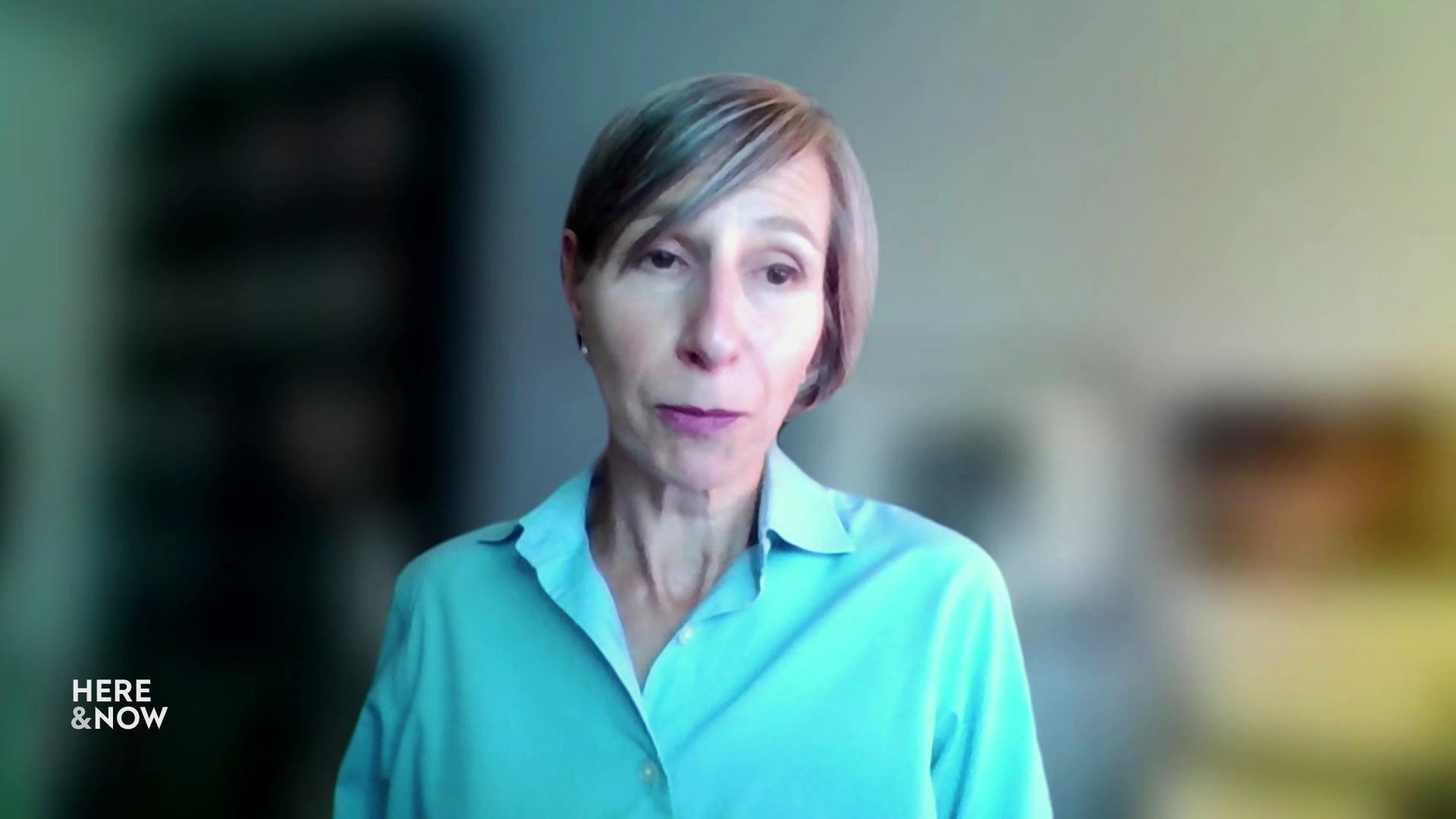
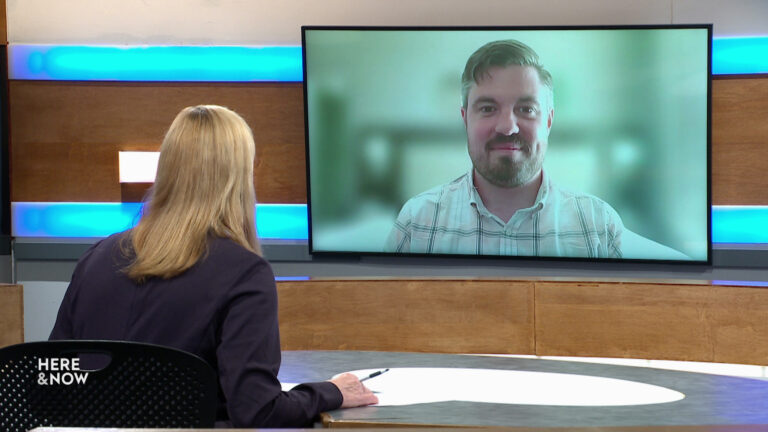
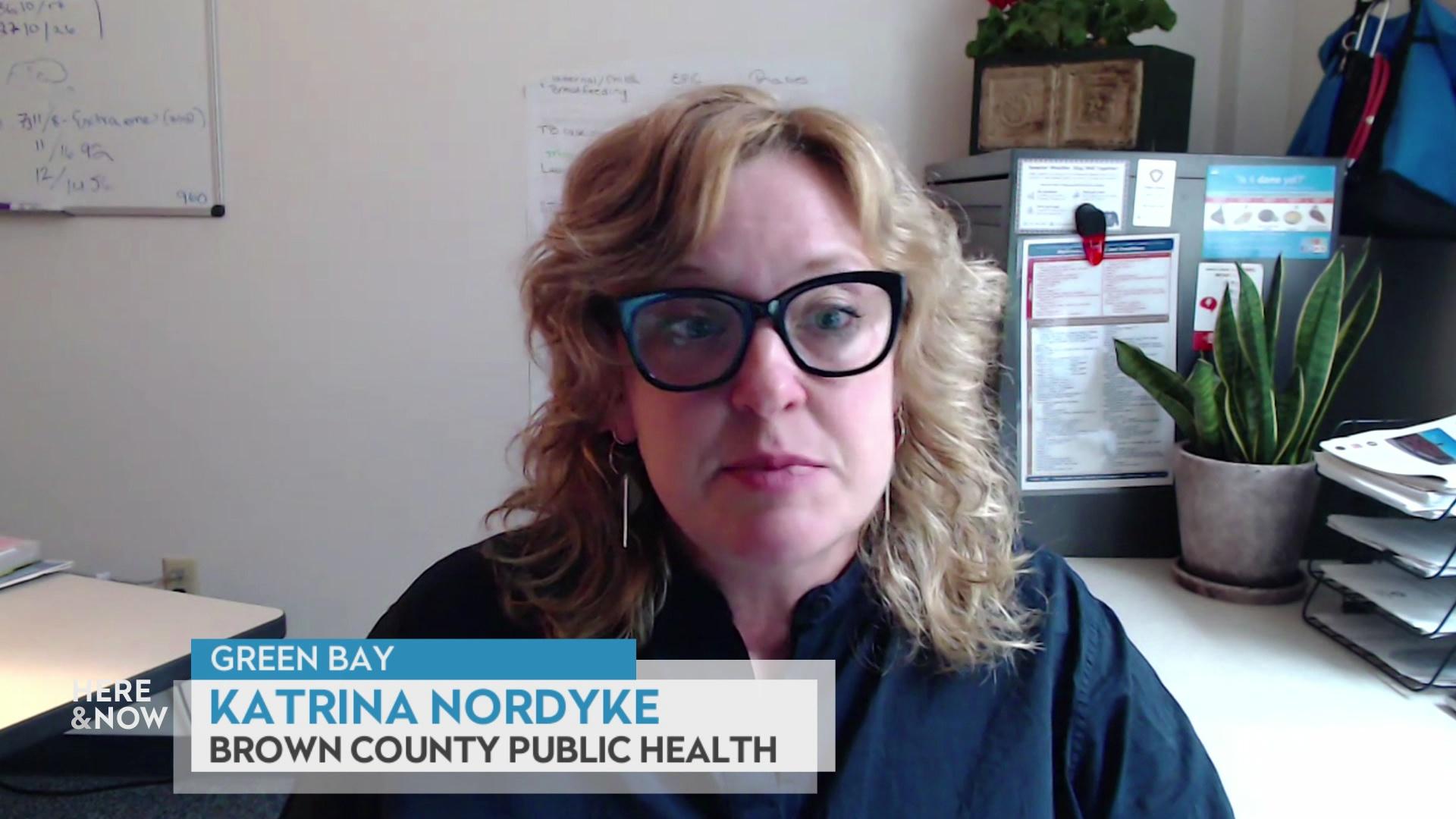
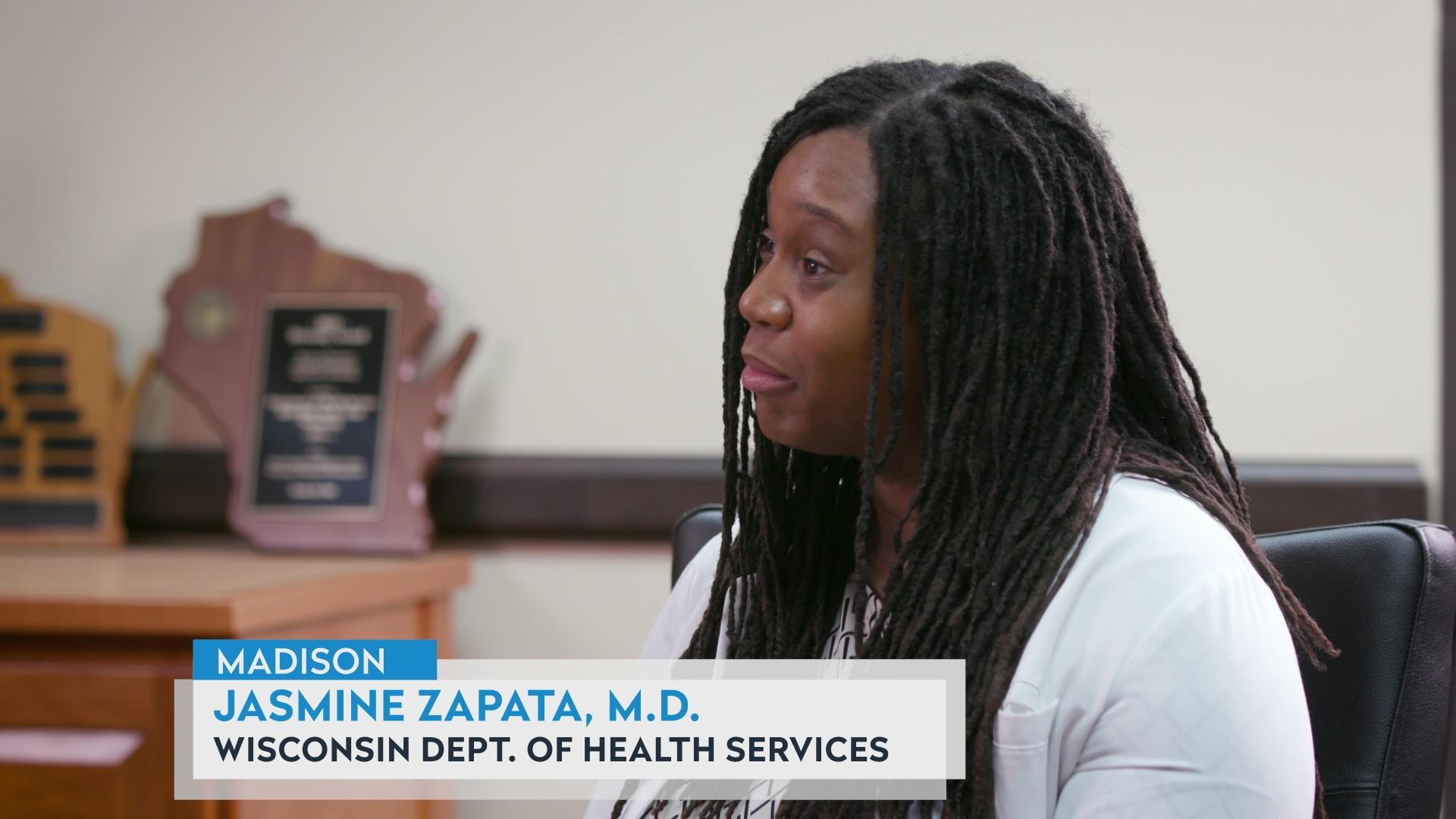

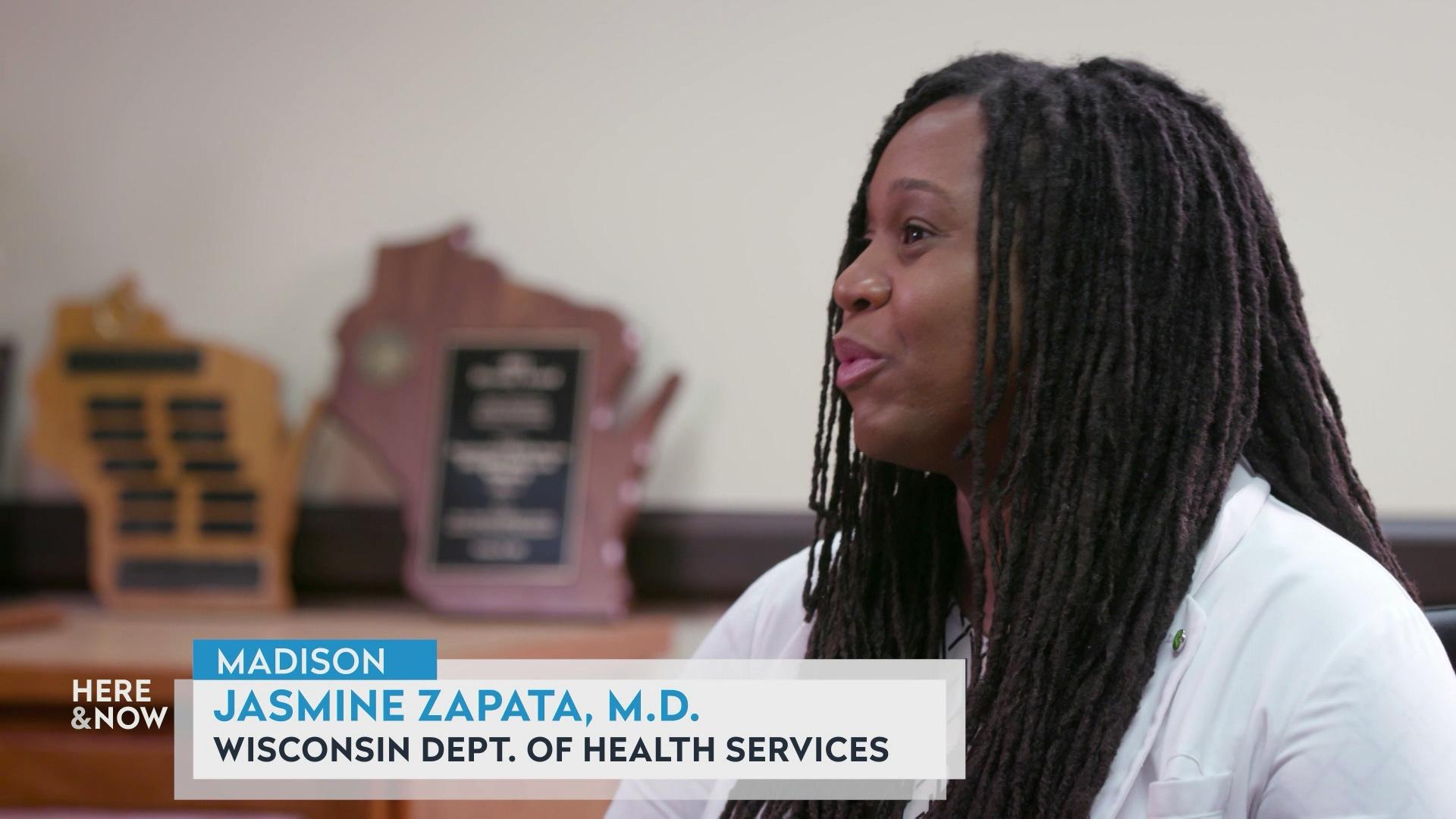

Follow Us